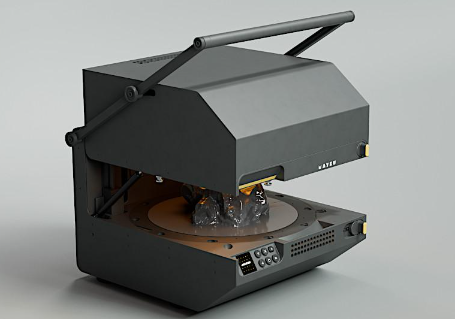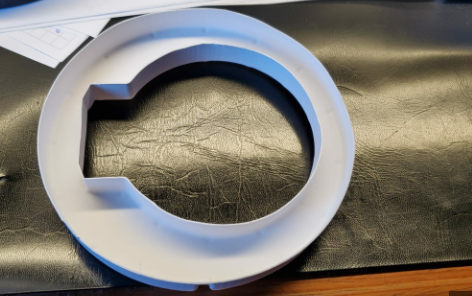Yes, TPU can be vacuum formed effectively, given its thermal stability and flexibility, suitable for various applications.
Fundamentals of TPU and Vacuum Forming
Thermoplastic Polyurethane (TPU) is a versatile material known for its elasticity, durability, and resistance to oil and grease. Key properties of TPU include high tensile strength, abrasion resistance, and flexibility over a wide temperature range. These characteristics make TPU a preferred choice for applications requiring a combination of rubber-like elasticity and the toughness of plastic.
Vacuum forming is a process where a sheet of plastic is heated to a pliable forming temperature, formed to a specific shape in a mold, and trimmed to create a usable product. The process requires precise control of heating and cooling to achieve optimal results, especially when working with materials like TPU that have specific thermal properties.

Properties of Thermoplastic Polyurethane (TPU)
TPU’s unique structure, composed of hard and soft segments, gives it the ability to stretch and return to its original shape. Its abrasion resistance is notably superior to that of PVC and rubber, making it ideal for high-wear applications. The material’s resilience against oil, grease, and various chemicals adds to its versatility.
TPU’s thermal stability is crucial for vacuum forming.
Basics of Vacuum Forming Process
The vacuum forming process begins with heating a TPU sheet until it becomes soft and pliable. The cooling phase solidifies the TPU, retaining the formed shape.
Key factors in vacuum forming TPU include the heating time, which must be sufficient to soften the material without degrading it, and the cooling rate, which influences the final properties of the formed product. However, the precision in controlling the heating and cooling phases is crucial to maintain the quality of the finished product.
Compatibility of TPU with Vacuum Forming
Thermoplastic Polyurethane (TPU) is increasingly becoming a popular choice for vacuum forming due to its unique properties. Its compatibility with the vacuum forming process is primarily due to its excellent thermal behavior and adaptability to various shapes and complexities.
Thermal Behavior of TPU in Vacuum Forming
- Heat Resistance: TPU can withstand temperatures up to 200°C without degrading, making it suitable for the high-heat environment of vacuum forming.
- Flexibility at Various Temperatures: It maintains flexibility over a broad temperature range, ensuring that it can be shaped without cracking or breaking.
- Cooling Characteristics: TPU cools down relatively quickly while retaining the desired shape, a critical factor in mass production.
The thermal behavior of TPU plays a significant role in its compatibility with vacuum forming. It allows for efficient molding and demolding, contributing to higher production speeds and reduced cycle times.
Challenges in Vacuum Forming TPU
- Temperature Control: Precise temperature control is crucial. Overheating can cause degradation, while insufficient heating may lead to incomplete forming.
- Mold Design: Complex shapes might require intricate mold designs to accommodate TPU’s elasticity and strength.
- Cost Implications: The cost of TPU and the specific requirements for vacuum forming it can be higher compared to other plastics. This includes energy costs for maintaining optimal temperatures and potential investments in specialized equipment.
- Quality Assurance: Ensuring consistent quality in the final product can be challenging, particularly with intricate designs or when high levels of detail are required.
Techniques for Vacuum Forming TPU
Vacuum forming TPU requires a blend of technical expertise and precision. This process involves specialized techniques to prepare TPU and optimize various parameters. The goal is to ensure that the final product meets the required standards in terms of quality, durability, and functionality.
Preparing TPU for Vacuum Forming
- Material Selection: Choose the right grade of TPU considering its Shore hardness. Typically, grades ranging from 60A to 85D are suitable for vacuum forming.
- Pre-Heating: TPU sheets should be pre-heated to a temperature between 180°C to 200°C. This range ensures the material is pliable enough for forming without degrading.
- Sheet Thickness: The thickness of TPU sheets can vary, typically between 0.5mm to 5mm. Thicker sheets might require longer heating times and higher temperatures.
- Surface Treatment: TPU surfaces can be treated with release agents to facilitate easy demolding and to achieve a smoother finish on the formed product.
Optimization of Vacuum Forming Parameters for TPU
- Heating Time: The heating time for TPU sheets should be carefully monitored. Overheating can lead to material degradation, while under-heating can result in incomplete forming.
- Vacuum Pressure: Adequate vacuum pressure is essential. Typically, a pressure of around 0.7 to 0.9 bar is effective for TPU sheets.
- Mold Temperature: The mold should be maintained at a temperature that prevents premature cooling of the TPU. A mold temperature range of 20°C to 35°C is often optimal.
- Cooling Rate: Rapid cooling can lead to warping or stress concentrations in TPU. Controlled cooling ensures the final product retains its shape and material properties.
The following table summarizes key parameters for vacuum forming TPU:
| Parameter | Specification | Details |
|---|---|---|
| Material Grade | 60A to 85D Shore Hardness | Determines flexibility and strength |
| Pre-Heating Temperature | 180°C to 200°C | Ensures optimal pliability |
| Sheet Thickness | 0.5mm to 5mm | Affects heating time and temperature |
| Heating Time | Adjusted according to thickness | Critical for complete forming |
| Vacuum Pressure | 0.7 to 0.9 bar | Ensures snug fitting to the mold |
| Mold Temperature | 20°C to 35°C | Prevents premature cooling |
| Cooling Rate | Controlled | Avoids warping and maintains properties |
Applications and Limitations
Thermoplastic Polyurethane (TPU) vacuum formed products find extensive applications in various industries due to their unique properties. However, there are certain limitations and considerations to keep in mind during the vacuum forming process of TPU.
Practical Applications of Vacuum Formed TPU
- Automotive Parts: TPU is widely used for making durable and flexible automotive parts like air ducts, door panels, and instrument panels.
- Medical Devices: Due to its biocompatibility and sterilizability, TPU is ideal for creating custom orthopedic braces and prosthetic components.
- Protective Gear: Its impact resistance makes TPU perfect for manufacturing items like sports guards, helmets, and safety goggles.
- Consumer Electronics: TPU finds application in creating durable and aesthetic casings for mobile phones, tablets, and other electronic devices.
- Packaging Solutions: The material’s flexibility and strength are advantageous in producing specialized packaging materials, especially for delicate products.
Limitations and Considerations in Using TPU for Vacuum Forming
- Cost Factors: TPU can be more expensive than other plastics used in vacuum forming.
- Processing Challenges: TPU’s elastic nature can make it challenging to achieve precise and consistent shapes, especially in complex geometries.
- Temperature Sensitivity: While TPU has excellent thermal properties, it requires careful temperature management during the vacuum forming process to avoid defects.
- Equipment Requirements: Specialized equipment may be necessary to handle TPU’s unique properties, which can add to the initial setup cost.
- Recyclability: Although TPU is recyclable, the recycling process can be complex and requires proper facilities and conditions.

Case Studies: TPU Vacuum Forming in Practice
Exploring case studies of TPU vacuum forming projects provides valuable insights into the practical application of this process. These studies highlight the successes, challenges, and best practices that have emerged from real-world experiences.
Analysis of Successful TPU Vacuum Forming Projects
A notable success story involves the production of automotive interior parts. In this project, TPU’s durability and aesthetic appeal were key factors. The project achieved a high level of precision in forming complex shapes, which is essential for components that must fit into specific spaces within a vehicle’s interior. The TPU parts displayed excellent resistance to wear and tear, a crucial requirement for automotive applications.
Another significant application was in the medical device sector, where TPU’s biocompatibility made it ideal for creating custom-fit orthopedic braces. The project successfully navigated the challenges of forming TPU to fit the unique contours of individual patients’ limbs, showcasing the material’s versatility and adaptability.
Lessons Learned and Best Practices
From these case studies, several lessons and best practices emerge:
- Material Preparation: Thoroughly preparing TPU sheets before the vacuum forming process, including pre-heating to the optimal temperature, is critical for achieving the best results.
- Mold Design and Maintenance: Investing in high-quality mold design and regular maintenance ensures consistent quality in the vacuum forming process.
- Temperature Control: Maintaining precise control over the heating and cooling phases of TPU is essential to avoid material deformation or degradation.
- Quality Control: Implementing stringent quality control measures at each stage of the vacuum forming process helps in identifying and rectifying issues early on.




